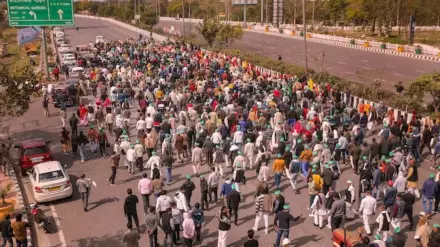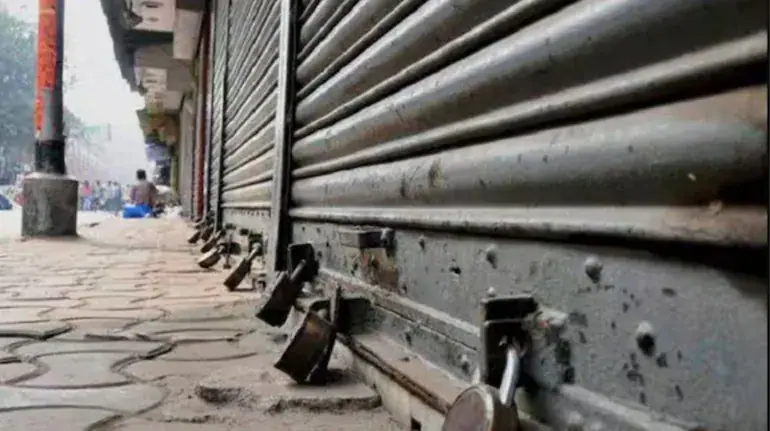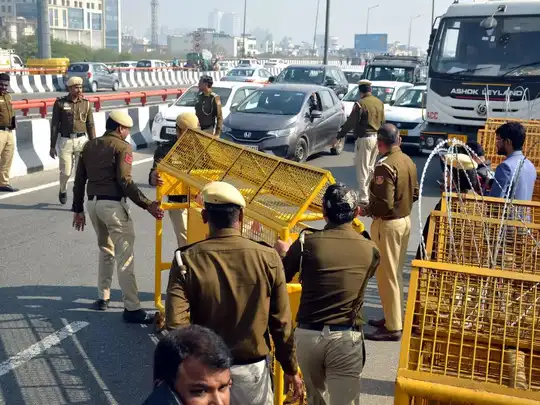India witnesses yet another Bharat Bandh today as 10 prominent trade unions unite in a massive nationwide strike. With over 25 crore workers participating, this movement marks a significant protest against the government’s labour policies, especially the four new labour codes that have drawn widespread criticism from the working class.
But what exactly are the demands behind the strike? Why are unions calling it a fight to “protect workers’ rights”? Here’s a complete breakdown.
What Is Happening Today?
The Bharat Bandh on July 9, 2025, is not a routine strike—it is a unified call by central trade unions across India to demand the rollback of controversial labour reforms, privatization efforts, and to seek better social protection and minimum wage policies for workers across sectors.
From transportation and banking to PSUs and the informal sector, operations in many states are expected to slow down or halt due to the coordinated industrial action.

Who Are the 10 Trade Unions Behind the Strike?
Here are the ten central trade unions that have called for this Bharat Bandh:
- CITU (Centre of Indian Trade Unions)
- INTUC (Indian National Trade Union Congress)
- AITUC (All India Trade Union Congress)
- HMS (Hind Mazdoor Sabha)
- SEWA (Self Employed Women’s Association)
- AIUTUC (All India United Trade Union Centre)
- AICCTU (All India Central Council of Trade Unions)
- TUCC (Trade Union Coordination Centre)
- LPF (Labour Progressive Federation)
- UTUC (United Trade Union Congress)
These unions represent a wide spectrum of industries and workers, from government employees and factory workers to daily wage labourers and self-employed women.
Key Demands of the Bharat Bandh
1. Scrapping of the Four Labour Codes
Workers are demanding the complete withdrawal of the four labour codes:
- Code on Wages
- Industrial Relations Code
- Social Security Code
- Occupational Safety, Health & Working Conditions Code
According to the unions, these codes:
- Weaken the right to strike
- Encourage contract labour
- Remove several protections under previous laws
- Centralize power with employers
2. Old Pension Scheme Restoration
Unions demand reinstatement of the Old Pension Scheme for government employees, citing insecurity in the current NPS model.
3. National Minimum Wage of ₹26,000
Workers demand a uniform minimum wage of ₹26,000 per month, along with a monthly inflation allowance and regular wage revision.
4. End to Privatisation
The strike strongly opposes the sale of government-owned entities, especially in sectors like:
- Railways
- Steel plants
- Banks
- Insurance
- Power distribution
5. Stop Forced Contractualisation
A key demand is permanent job recruitment in both public and private sectors. The unions argue that the rising trend of contract jobs reduces security, wages, and dignity.
6. Expanded Social Security and ESI for All
Workers are calling for:
- Universal Employees’ State Insurance (ESI) coverage
- Provident fund access for informal sector workers
- Paid maternity leave
- Retirement benefits
7. Strengthen MGNREGA & Introduce Urban Employment Scheme
Demands include:
- Increasing MGNREGA days from 100 to 200 per year
- Launching an equivalent urban job guarantee scheme
What’s Wrong with the Labour Codes?
The four new labour codes were introduced as reforms to modernize labour laws, but trade unions believe:
- They undermine collective bargaining rights
- Make it easier for employers to hire and fire workers
- Raise the threshold for company layoffs without needing government permission
- Restrict the right to protest and strike
Unions claim that these codes were passed without adequate consultation and go against decades of hard-earned worker protections.
Impact Across India
The Bharat Bandh has found support in various states like West Bengal, Kerala, Tamil Nadu, Maharashtra, and Punjab. Expect disruptions in:
- Road & rail transport
- Banking services
- Schools and universities
- Public utility offices
- Industrial production
While essential services like hospitals are likely to remain functional, several sectors are expected to observe a complete shutdown.

Voices from the Ground
Union leaders argue this is not just a protest but a people’s movement to preserve labour dignity, fair wages, and social justice. They believe that the government’s silence over multiple petitions and memoranda has forced them to escalate to nationwide action.
Women’s groups like SEWA have emphasized how the reforms hurt informal and self-employed workers, especially women who already face pay inequality and lack of social security.
Conclusion: What This Bharat Bandh Represents
Today’s Bharat Bandh is a watershed moment for India’s labour movement. With millions of workers walking off the job, the protest is not just about policy—it’s about preserving livelihoods, restoring rights, and ensuring dignity in labour.
As the government pushes for economic reforms, workers are drawing a red line, demanding that growth must not come at the cost of their security and well-being.
More For You
1.Capgemini Acquires WNS for $3.3 Billion to Lead in Intelligent Operations
2.Monica Barbaro: Hollywood’s Rising Star Breaking Stereotypes with Grit and Grace
3.Archita Pukham Viral Video Controversy: What Really Happened?

